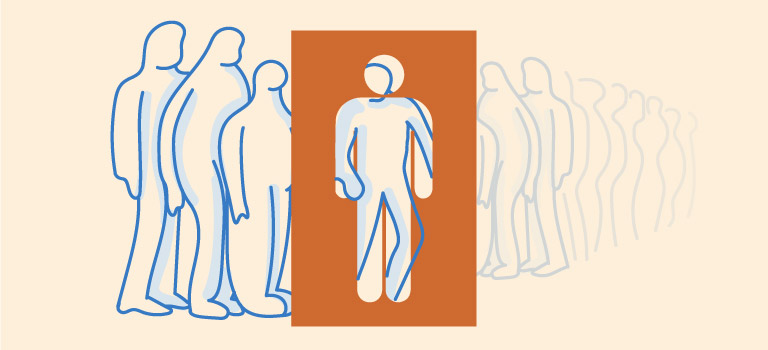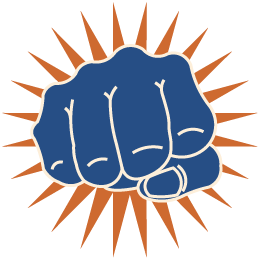Redefining Manhood: How to Promote Healthy Masculinity Among Boys

Last updated: April 2020
Whether they are being told to “be a man,” “toughen up” or that “boys don’t cry,” young men are often on the receiving end of messages that create rigid rules around masculinity.
A study published in the Open Journal of Social Science Research (OJSSR) analyzing men and masculinity in modern society described masculinity as “a set of stage directions, a ‘script’ men learn to perform” in order to gain entry into the world of men. However, the behaviors governed by traditional gender roles that many young men learn to perform can be harmful, such as suppressing their basic human need to express themselves emotionally.
This kind of harmful masculinity is rooted in negative aspects of traditional masculinity that pressure boys and men to live up to an unattainable standard of manhood, often isolating them, damaging their self-esteem and creating a domino effect of adverse behavioral, physical and public health outcomes. But, by reframing as positive assets those traits that are typically looked down upon, boys and men can overcome problematic learned behaviors and become more accepting of who they are. In this piece, we chatted with experts in counseling and psychology about the roots of toxic masculinity and how counselors and school counselors can help address the problem.How Do Gender Norms Influence Masculinity?
To understand masculinity, it’s important to acknowledge gender norms. In a 2015 study “Measurement of Masculinity Ideologies: A Critical Review,” the authors highlight the numerous instruments that psychologists use to measure masculinity ideologies. Each measures masculinity in a slightly different way. Developed by Robert Brannon and Samuel Juni, the Brannon Masculinity Scale (BMS) is among the tools used to measure attitudes about traditional American masculinity, examining the four themes related to what Americans think a man is supposed to be and how they should act.
According to the Brannon Masculinity Scale, men should:

THE BIG WHEEL
- Be the breadwinner and provide for their families.
- Aim to be admired and respected.

THE STURDY OAK
- Be tough, physically strong, and capable of handling pain.
- Be “male machines” — strong, confident, decisive workers.

NO SISSY STUFF
- Avoid femininity and engaging in feminine activities.
- Conceal their emotions and never show feelings.

GIVE ‘EM HELL
- Be courageous, aggressive, and forceful, capable of engaging in violence if necessary.
While there are aspects of these norms that aren’t necessarily negative and harmful, it’s the rigidity of the definition of masculinity that can become troubling and toxic. As the OJSSR study notes, men may construct their identity and derive self-worth from what they can contribute to social structures like family and career. In the process, they may lose some of their multidimensionality.
Thomas Haller, psychotherapist and author of Dissolving Toxic Masculinity, explained that this rigidity positions men to let only one part of their being out. Consequently, men aren’t embraced as full, complete human beings that are capable of being loving, gentle, and understanding.
“Toxic masculinity pigeonholes men into thinking there’s only one way to be,” Haller said. “You have to be strong, powerful, unrelenting, and never show emotions. But with that, we lose our variety and diversity as men.”
And society pushes that standard of masculinity on males at a young age.
“A lot of boys quickly learn to overconform to more rigid gender roles because it’s safe.”
“If boys express aspects of their gender experience that go against traditional gender expectations, they’re shamed and there’s a penalty for that,” said Matt Englar-Carlson, professor of counseling and director of the Center for Boys and Men at California State University at Fullerton. “A lot of boys quickly learn to overconform to more rigid gender roles because it’s safe.”
Englar-Carlson is one of five authors of the American Psychological Association’s (APA) first-ever guidelines for psychological practice with boys and men (PDF, 32 KB). Although toxic masculinity itself is not explicitly defined in the APA guidelines, the research indicates that negative aspects of traditional masculinity mirror many of the traits examined in the BMS including:
- Toughness
- Stoicism
- Self-reliance
- Competitiveness
- Dominance
- Heterosexism
- Aggression
- Lack of emotional sensitivity
Again, displaying any of these traits isn’t necessarily harmful. But the tendency to overconform comes at a price. According to the APA, men who engage in unhealthy levels of any of these traits are often more likely to experience:
- Cardiovascular problems
- Harsh discipline at school
- School dropouts
- Suicide
- Violence
- Incarceration
- Substance misuse
- Early mortality
- Risk of becoming victim to crimes
“These aspects of male socialization essentially encourage men to act out against themselves and against other people, including accepting violence and intimidation or being overly competitive,” Englar-Carlson said. “Harmful phrases like ‘man up’ reinforce rigid expectations in terms of who boys are and it also excuses behavior.”
What Are the Mental and Emotional Effects of Rigid Gender Norms for Men?
“If you want to effectively understand males, you have to understand shame,” Englar-Carlson said. “It’s not only how boys and men experience shame externally but also how internally they shame themselves.”
The gender role strain paradigm explores the psychological gaps men experience between grappling with who they are and the men they are “supposed” to be. The paradigm identifies three different strains:
The identity crisis that can accompany attempting to achieve the masculine ideal can have a host of negative mental and emotional effects. According to the APA, men may:
- Display muted emotions.
- Show a lack of empathy.
- Experience aggression that tends to persist over time.
- Engage in abusive behavior toward loved ones.
- Experience higher rates of mental illness diagnosis.
- Receive a misdiagnosis of psychological disorders.
- Avoid seeking professional help.
Englar-Carlson explained that, unlike girls and women, men who express emotions such as sadness or hurt, often find that those emotions are invalidated by others. One way they cope is by refraining from expressing themselves emotionally, which can make them feel worse. Another can include refusing to take ownership of their own emotions.
Haller pointed to the use of “make me” language — expressions such as, “you make me angry” or “you make me sad” — which shift blame onto other people or onto society at large. It enables harmful thinking where men lose autonomy and responsibility for their emotions, leaving them feeling powerless in how to respond.
How to Address Harmful Masculinity with Boys
It’s important for young men to understand that masculinity looks different for each individual. Counselors and school counselors can show boys how to reduce negative elements of masculinity in their lives by making it okay to verbalize emotions, empowering them to make healthier and less risky life choices, and celebrating masculinity for all the ways it does not disenfranchise them.
School counselors should pay specific attention to nurturing and supporting the mental health of boys and young men by being aware of the ways that gender norms have shaped their outlooks and behaviors. They can start by acknowledging that men, just like women, have gendered life experiences.
According to Englar-Carlson, the rules of society dictate that men have to censor what they express, which means that boys essentially have to convince themselves they aren’t really feeling what they’re feeling. This often leads to numbness and detachment.
“It’s up to counselors to create spaces that allow those emotions to come out without shaming them,” he said. “It’s about anticipating and being sensitive to the experiences of boys and men.”
To begin to tackle this issue, Englar-Carlson said counselors should first suspend their own judgment and stereotypes when working with boys and recognize their own gender role biases so that they don’t transfer them onto their clients.
Once they have grappled with their own stereotypes, they can engage their male clients in the following ways:
- Focus on the future. Ask questions like, “What kind of man do you aspire to be?” This type of question avoids reinforcing the harmful ideas that boys aren’t worthy or good enough.
- Ask what’s right, not what’s wrong, with you. Some boys may feel defensive about being in a counselor’s office, which is an area of vulnerability and not necessarily a desired place to be. Validate help-seeking behaviors that may open up a better dialogue.
- Create a safe environment. If a boy is tentative about expressing himself, the first question shouldn’t be, “How do you feel?” Counselors can ask other questions that can build up towards approaching emotional expression, rather than going directly at it.
- Recognize that it might be hard to share emotions. Be non-judgmental and avoid shaming anyone for feeling apprehensive about sharing their emotions.
- Reach out. Counselors can look for ways to be a voice for boys. Particularly with boys of color, counselors need to be more encouraging and not discriminatory.
- Talk about healthy masculinity. This is a conversation many boys and men never have. It can help them target what parts of masculinity are positive.
What does healthy masculinity look like? A Call to Men, an organization dedicated to preventing violence by promoting positive manhood, lays out a framework for healthy masculinity , which encourages men and boys to:
- Express a full range of emotion and feel validated.
- Be vulnerable and seek help when necessary.
- Treat people equally and respectfully.
- Listen to and value women and girls.
- Serve as role models for their male peers.
“We should rescript that narrative where boys are raised to know, ‘I am in charge of my own feelings,’” Haller said. “The world doesn’t make you anything. You make it yourself.”
If you’re interested in pursuing a career in school counseling, read more about how to become a school counselor and visit our list of Master’s in School Counseling online programs to find the right school for you.

